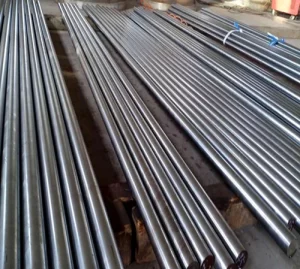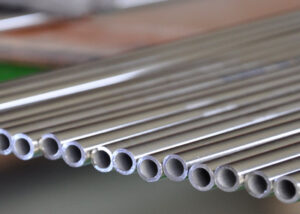Introduction
In the realm of materials selection, the delicate balance between performance and cost is a relentless consideration. Among the ranks of stainless steel, 410 stainless steel emerges as a contender renowned for its attributes. Yet, the pragmatic world of industrial settings demands a comprehensive analysis of the cost-effectiveness of employing 410 stainless steel. In this comprehensive exploration, we delve into the intricate web of factors that shape the economics of using 410 stainless steel—unveiling its composition, properties, corrosion resistance, longevity, production efficiency, and the careful considerations that orchestrate a harmonious interplay between investment and returns.
Economic Enigma: Deciphering the Cost-Effectiveness Conundrum
 Cost-effectiveness is the keystone in industrial decision-making. The allure of 410 stainless steel’s attributes is juxtaposed with the financial considerations of material selection and production.
Cost-effectiveness is the keystone in industrial decision-making. The allure of 410 stainless steel’s attributes is juxtaposed with the financial considerations of material selection and production.
Demystifying the Composition of 410 Stainless Steel
410 stainless steel’s composition forms the blueprint for its performance and cost implications. A balance of elements influences its mechanical properties, corrosion resistance, and suitability for various applications.
Stalwart Performance: Mechanical Properties that Matter
410 stainless steel’s mechanical properties, including strength, hardness, and toughness, underline its performance in demanding industrial environments. The interplay between these properties impacts its longevity and, consequently, its cost-effectiveness.
Corrosion Resistance: A Shield Against Deterioration
The corrosion resistance of 410 stainless steel bolsters its cost-effectiveness. The material’s ability to withstand corrosive environments reduces the need for frequent replacements, enhancing its economic viability.
Longevity and Sustainability: Investment in Durability
Longevity is an investment in sustainability. 410 stainless steel’s durability reduces maintenance costs, replacement cycles, and overall expenditures, making it a cost-effective choice over time.
Production Efficiency: Crafting with 410 Stainless Steel
410 stainless steel’s ease of fabrication, machinability, and weldability impact production efficiency. Streamlined manufacturing processes contribute to lower production costs, making it an attractive option.
Machining and Fabrication: Challenges and Solutions
While 410 stainless steel offers machinability and fabricability, its hardness can pose challenges during certain processes. Innovative tooling, lubrication, and machining techniques mitigate these challenges.
Comparative Analysis: Cost vs. Performance of 410 Stainless Steel
Comparing the cost-effectiveness of 410 stainless steel with other materials underscores its value proposition:
- Austenitic Stainless Steels: Higher initial costs offset by enhanced corrosion resistance and durability.
- Carbon Steels: Lower material costs, but reduced corrosion resistance in comparison to 410 stainless steel.
Strategic Investment: Making the Case for 410 Stainless Steel
Investing in 410 stainless steel involves a holistic assessment of short-term costs against long-term benefits:
- Lifecycle Cost Analysis: Evaluating total costs, including maintenance, replacement, and downtime.
- Application Suitability: Matching material attributes to the demands of the industrial environment.
- Industry Standards: Meeting regulatory requirements and industry standards adds to cost-effectiveness.
Industry Icons: Applications that Thrive on Cost-Effective 410 Stainless Steel
 410 stainless steel’s cost-effectiveness finds a home in various industrial applications:
410 stainless steel’s cost-effectiveness finds a home in various industrial applications:
- Automotive: Exhaust systems benefit from 410 stainless steel’s heat resistance and durability.
- Aerospace: Components exposed to harsh environments demand materials with exceptional performance and longevity.
- Industrial Equipment: Machinery, valves, and tools rely on cost-effective solutions without compromising performance.
FAQs About the Cost-Effectiveness of Using 410 Stainless Steel
Q1: Does the initial higher cost of 410 stainless steel outweigh its long-term benefits?
While 410 stainless steel might have a higher initial cost, its durability, corrosion resistance, and reduced maintenance expenses contribute to long-term cost-effectiveness.
Q2: Can 410 stainless steel’s cost-effectiveness be optimized through proper maintenance?
Absolutely. Regular maintenance and proper care extend the lifespan of 410 stainless steel components, enhancing its cost-effectiveness.
Q3: How does 410 stainless steel compare to lower-cost materials in terms of overall value?
410 stainless steel’s enhanced performance, corrosion resistance, and longevity justify its higher initial cost, offering better value in the long run compared to lower-cost alternatives.
Conclusion
The dance of cost-effectiveness in industrial settings is a symphony of investment and returns, where the allure of performance harmonizes with financial considerations. In this symphony, 410 stainless steel emerges as a resonant note, its attributes and longevity composing a melody of economic viability. As industries navigate the landscape of material selection, the interplay of corrosion resistance, mechanical properties, longevity, production efficiency, and application suitability shapes the narrative of cost-effectiveness. In the realm of stainless steel, 410 stainless steel’s value proposition extends beyond its initial investment, resonating as a strategic choice that harmonizes performance and economics, crafting a symphony where investment and returns dance in synchrony.
